Rich, crisp pancakes inspired by the traditional Chinese enoki pancakes. They're addictive, and arguably my favorite enoki mushroom recipe.
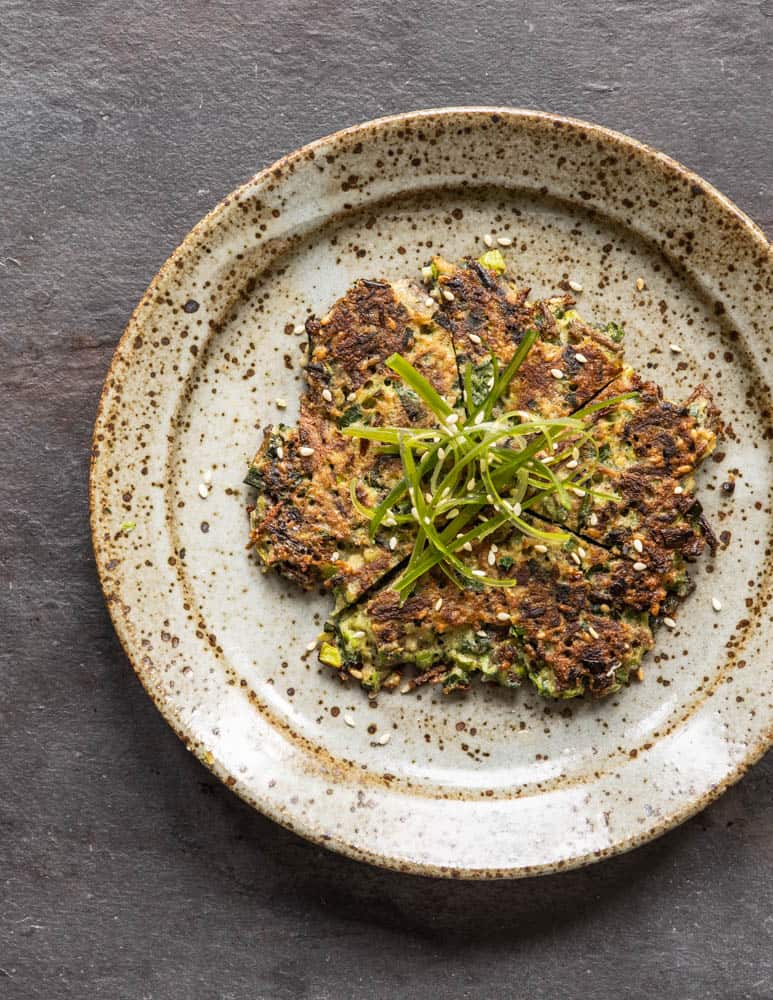
I will make cakes and fritters out of just about anything. Wild enoki and sesame pancakes are a great variation on that theme, but they're also a good example of how you can steer lots of dishes in different directions by carefully choosing your ingredients.
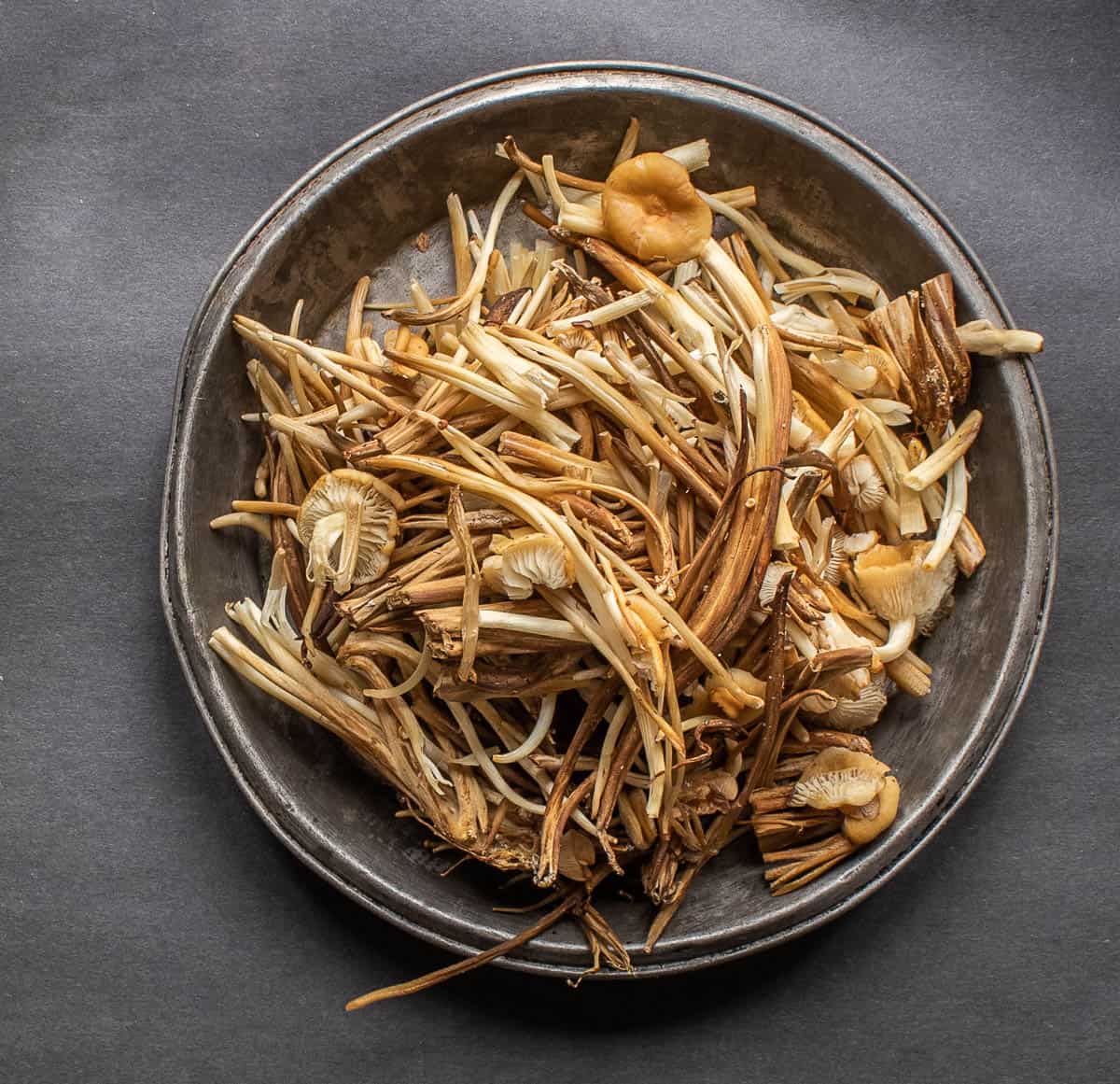
Here's the jist. My lobster mushroom cakes are one of the most popular recipes on this website, those are made with simple seasonings: some herbs, green onions, salt, and pepper, more or less.
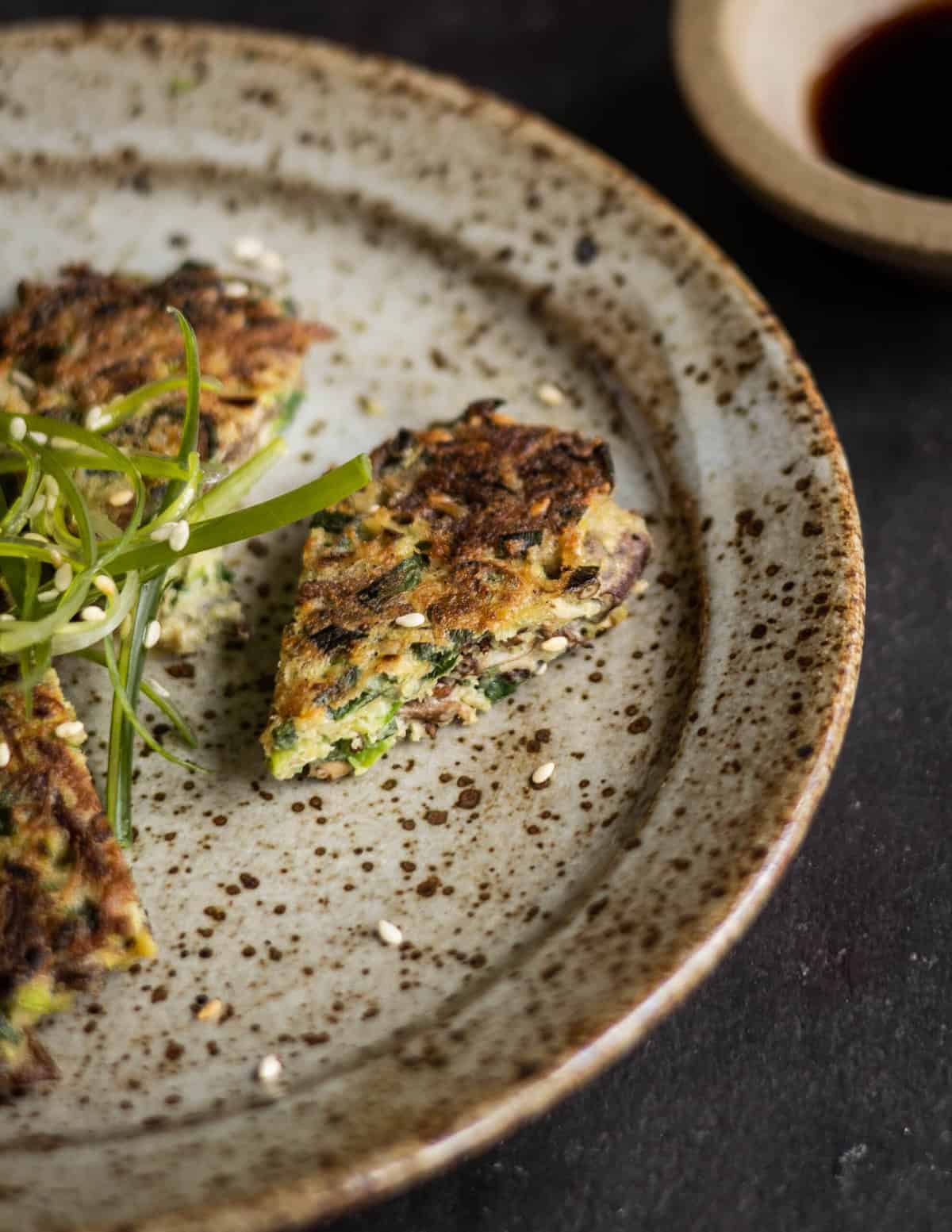
Another variation on the same theme are Hericium Crabcakes. Those taste like crab cakes because Hericium have a texture that's reminiscent of crab. The ingredients also steer the recipe in the direction of a crab cake, since they include Old Bay and mayonnaise.
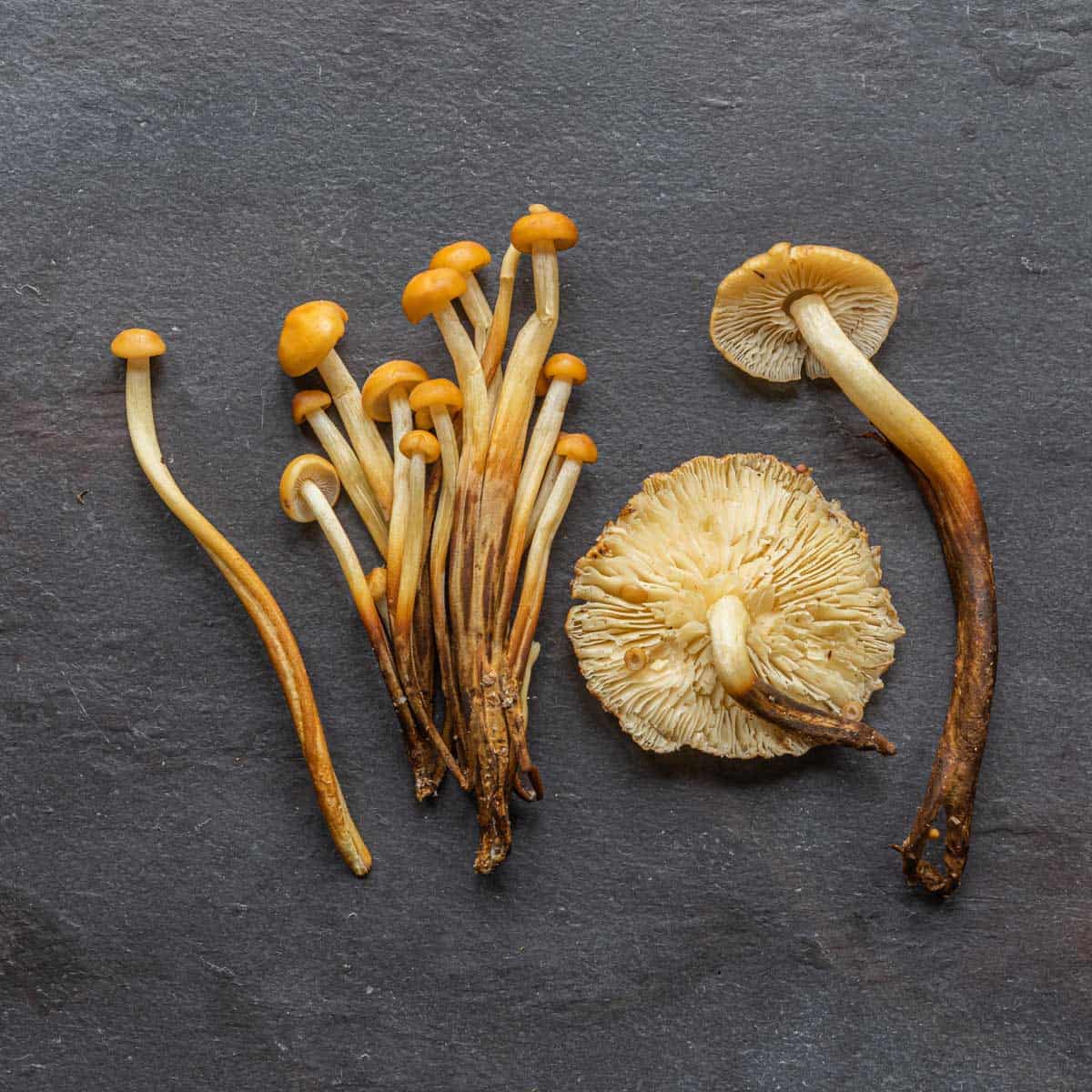
Enoki mushrooms (a.k.a. Flammulina velutipes and velvet shank), with their long stems, and lower water content, are a very different creature from the aforementioned mushrooms. They just taste better with traditional seasonings.
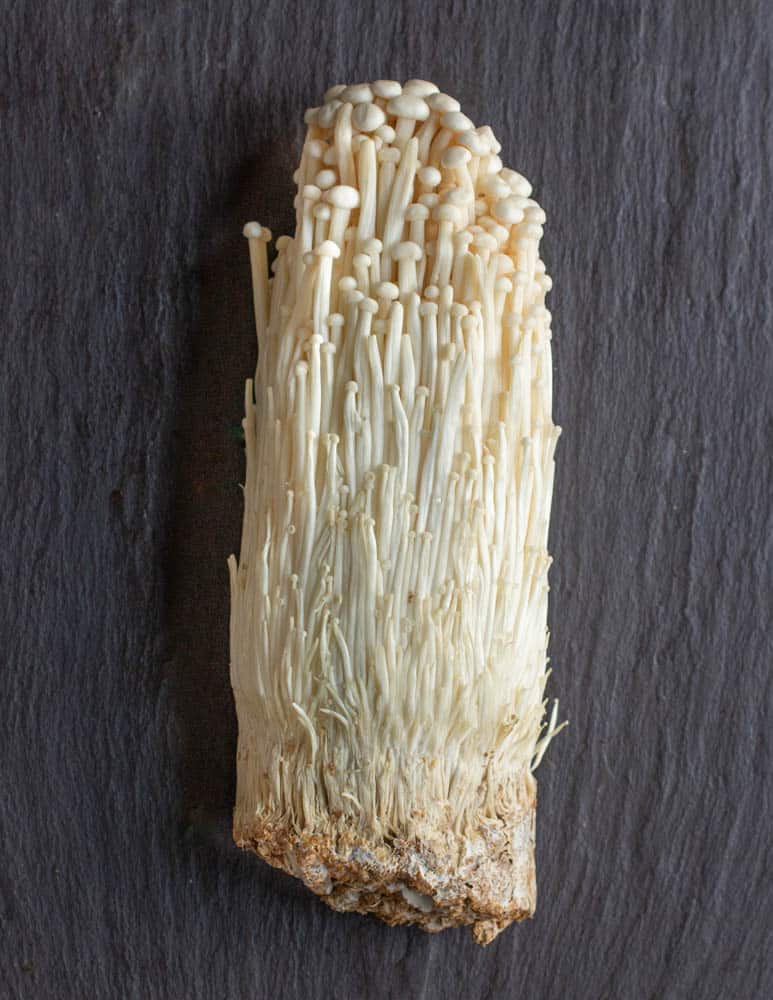
Important notes
- Lightly toasted sesame is added along with flour as the binder, which adds a gentle bitter note, and a good pop of sesame flavor anyone familiar with toasted sesame oil will know and love.
- The added ingredients are minimal—absolutely no breadcrumbs, which would make them more of a firm cake.
- Instead of finely shredding or chopping the mushrooms into pieces, the enoki, more specifically the stems, are left in longer pieces, about 1 inch.
- A dash of fish sauce in addition to salt helps to add umami base notes.
- Chinese chives (garlic chives) are cheap and widely available at Asian markets, they're a nice addition if you can get some.
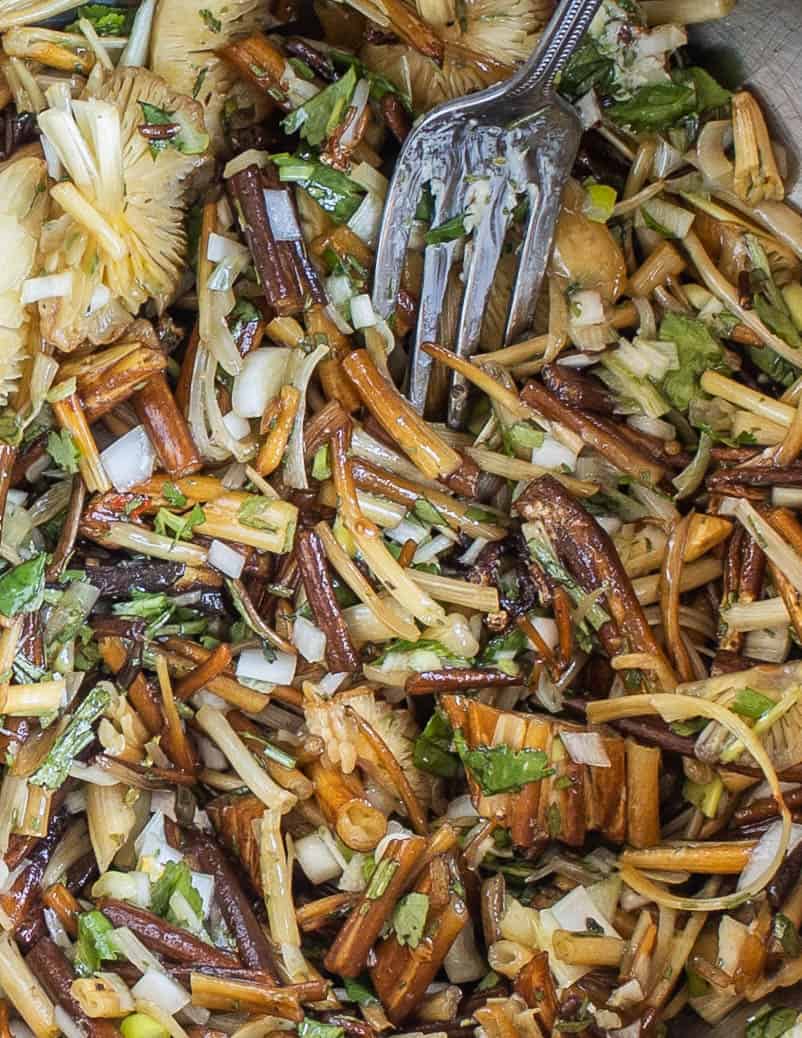
Pancake vs Cakes
Making large pancakes instead of smaller ones can be fun, and make for easier dipping into sauces and handling with chopsticks.
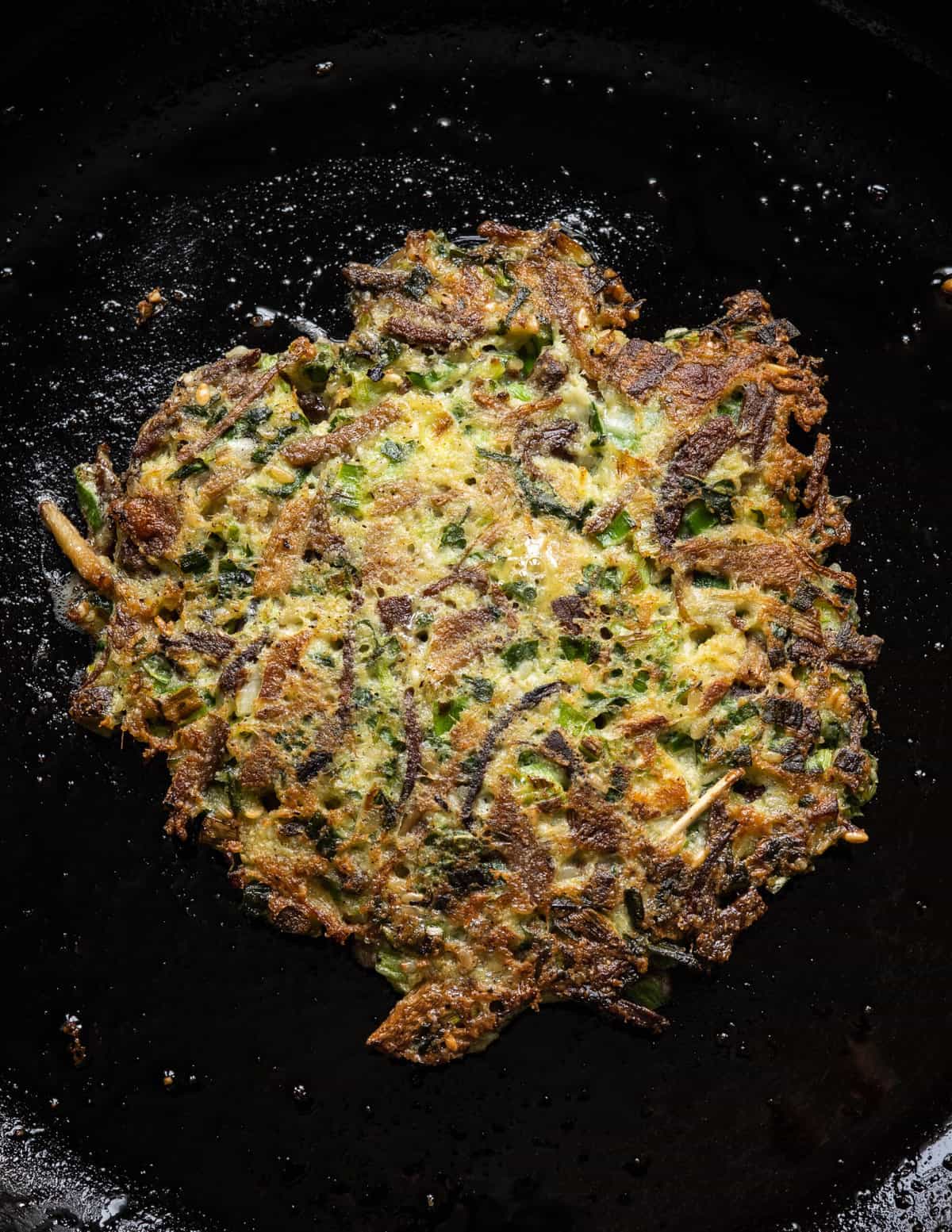
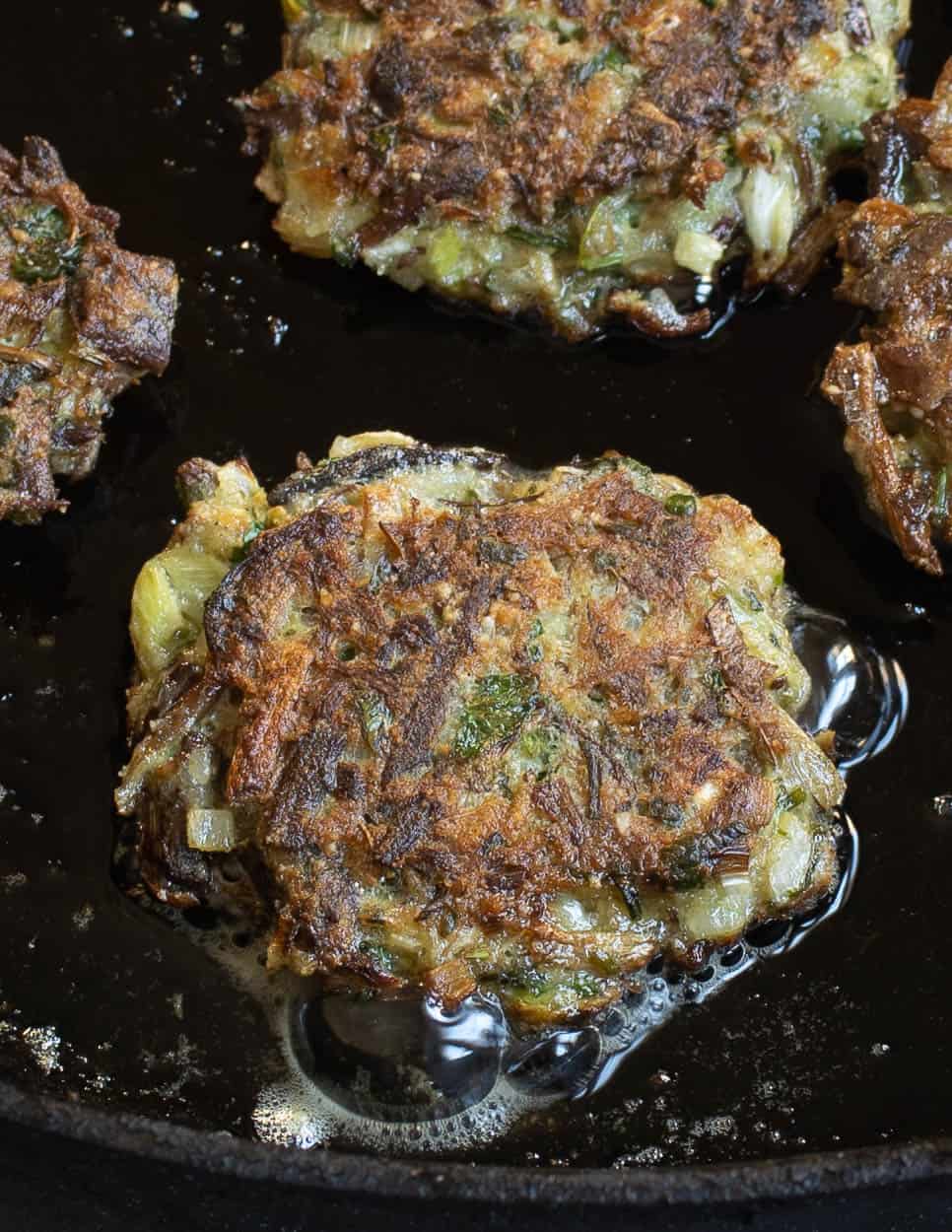
Sesame-Enoki Mushroom Pancakes
Equipment
- 1 mixing bowl
Ingredients
Enoki Pancakes
- 6 oz enoki mushrooms
- 2 large eggs
- 2 tablespoons all purpose flour
- 4 tablespoons toasted sesame seeds divided, plus a few extra for sprinkling
- ¼ cup leftover cooked rice
- 1 tablespoon fish sauce
- ¼ cup chopped cilantro
- 2 oz minced green onions
- 1 oz garlic chives or chives thinly sliced
- Flavorless oil for cooking
- Ponzu Sauce See recipe here
- kosher salt and fresh ground black pepper
Instructions
Make the batter
- Grind half of the sesame seeds to a powder in a spice grinder.
- Line up the enoki and cut into 1 inch pieces, then add to a mixing bowl with the egg mix, and remaining ingredients. Allow the mixture to rest for 30 minutes to help it set.
Testing and adjusting the flavor
- Heat a nonstick pan with a film of oil until hot over medium heat. Drop a teaspoon of the mixture into the pan and cook, then taste and adjust the seasoning for herbs, or a pinch of salt. Be careful not to over season them with salt if you’ll be serving them with the optional sauce, since it also contains salt.
Cook the cakes
- Drop ¼ cups of the mixture into the hot pan, for individual cakes, or ⅓-½ cups for larger sized pancakes you can cut into wedges, pressing them down into a rustic form.
- Cook the mushroom cakes medium-high to high heat until browned without disturbing them, then flip and cook the other side. If you find the cakes are delicate and difficult for you to work with, consider preheating the oven to 350, then popping the pan in the oven after a minute or two of cooking on the stove, which will help them set.
- When both sides of the cakes are browned, remove them and keep warm while you cook the rest, then cut into wedges you can pick up with chopsticks.
- Arrange the cut cakes on warmed plates, top with curls of finely julienned scallions soaked in ice water, sprigs of fresh herbs, a sprinkle of sesame, and the ponzu on the side. They're an excellent starter before a meal of fish.
Notes
Nutrition
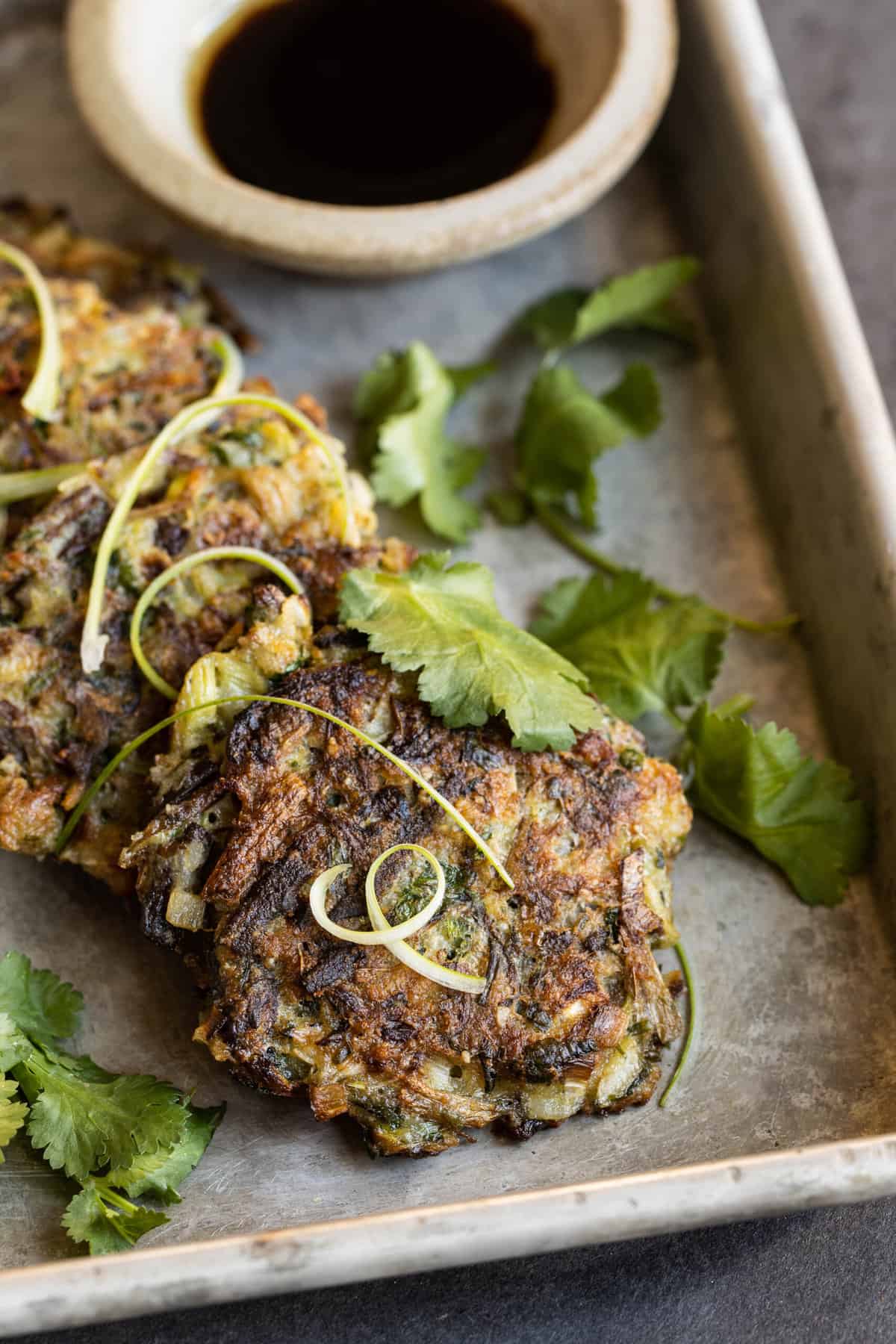

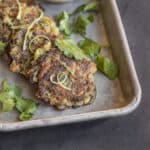
Leave a Reply